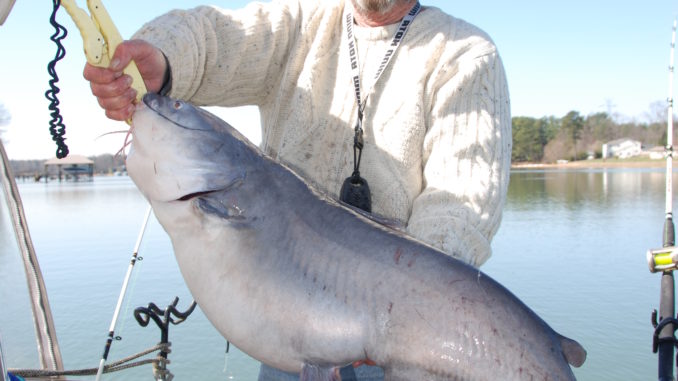
Winter is great time to fish for trophy blue catfish on Lake Norman. Take these tips and you’ll be ahead of the game.
In the 1956 motion picture, Gregory Peck portrays the character of Capt. Ahab, who relentlessly pursues the great white whale of Herman Melville’s classic, “Moby Dick.” The movie is an icon in the film industry and a classic tale of one man’s obsession with besting a giant beast.
North Carolina anglers who’d like a similar experience without all the drama could do worse than spending a day on Lake Norman with Mac Byrum, a full-time guide who spends his days relentlessly pursuing giant blue catfish that, in the cold of winter, often take on a particularly white color tone.
Certainly, the size of the fish that Byrum catches is comparable to that of Captain Ahab, and Byrum himself bears a striking resemblance to Gregory Peck’s character.
All clichés aside, what you’re left with at the end of the day is a man who knows how to pursue and catch giant blue catfish. Byrum’s reputation as a catfish guru was bolstered by the role he played in co-writing “The Catfish Hunters” in 2010.
Byrum used to fish exclusively for striped bass on Lake Norman, which was often referred to as the “Great Dead Sea” by fishermen who were often frustrated by its relative infertility. He admits the nickname might apply for stripers, but the 32,500-acre reservoir’s catfish population has been growing by leaps and bounds and once boasted the state-record blue.
“People forget about the big catfish we catch here,” said Byrum. “We had the state record – 85 pounds – for several years in the early part of this century. We got one heck of a flathead fishery, with flatheads up to 60 pounds caught pretty frequently.”
Winter cat fishing is typically thought in a “cut-bait and wait” approach, allowing catfish time to come find your offering from some deep hole.
But Byrum takes a more active approach, trolling multiple rods in a search of big cats.
“I call it ‘power-drifting’ because I use a trolling motor to troll. You want to hang at ½ mile per hour or less in the winter,” Byrum said. “The slower you go, the better off you are because the big fish aren’t going to expend a lot of energy to chase that bait.
“By drifting, you take the baits to them rather than waiting for them to come to you.”
Byrum power-drifts from the back of his boat, presenting baits on up to six rods. In order to keep everything from bunching up, he employs four side planer boards to spread out his two baits on either side, and he runs two lines straight back, a tactic he carried over from striper fishing.
However, rather than free-lining the bait, he uses a rig popularized on South Carolina’s Santee Cooper lakes that allows the baits to drag bottom without hanging up.
“Starting from the swivel, I attach to the main fishing line a 30-inch, 40- to 50-pound leader, to which I snell an 8/0 circle hook,” Byrum said. “On the leader, 8 or 9 inches above the hook, I peg a 2 ½-inch crappie float. On the main line, I thread a 1-ounce slinky weight, which is nothing but a parachute cord with BBs in it — you can make them or buy in bait shops. That keeps the whole rig down on the bottom, and the bait rides up a foot or so when trolled.”
By taking his baits to the fish, Byrum simply has to narrow his trolling runs to the areas of Lake Norman that are most likely to hold big winter cats.
“By late December and early January, they have set up in their winter residence, where they’re going to spend the remainder of the winter,” he said. “Normally, that’s the backs of our major creeks and in the alcoves or coves that adjoin the major feeder creeks, places like Rocky Creek, Mountain Creek, Stuffy Creek, Davidson Creek, and Lucky Creek.”
According to Byrum, the biggest determining factor in where and why Norman catfish take up winter residence in the backs of major creeks is the presence of baitfish. Baitfish not only determines which locations catfish will hold, but it also determines which depths they prefer.
“What draws them is the shad, threadfin shad, gizzard shad, and sometimes the blue backs,” Byrum said. “Catfish hang with the bait. The bait doesn’t move that much in the winter, like a normal spring pattern or a fall pattern. They pick an area and they stick to it.
“Lake Norman has no major water flow, so the shallow water will warm up, stay warm and will hold bait, mostly threadfins, all through the winter,” said Byrum.
This means big blue catfish tend to hang on the edges of points and dropoffs where it’s easier to move up to feed and back to shelter.
“Generally, the depths I’m targeting range from 10 to 30 feet,” Byrum said. “The neat thing about Lake Norman is you can fish an area like Rocky Creek, and within that area, you’re going to have a lot of circle points and drop-offs. You’re not going to have much other structure, but you’ve got the docks that line those areas along the shoreline, and they’ll hold crappie and sunfish, which are another bait source big blue cats.”
Despite his concern about finding baitfish, Byrum reserves most of his hook space for a special bait that didn’t come from the water.
“A friend of mine, Dieter Melhorn, was doing some video work for ESPN down in Alabama and was interviewing an 87-year- old Hall of Fame fisherman,” Byrum said. “This guy had won big tournaments for striper, crappie, bass — you name it — including catfish. When the interview was over, Dieter asked him what his favorite fish was, and he said the Arkansas blue catfish because you never knew what you were going to get when you put your line out.
“Since he’s also a big catfisherman, Dieter asked him what his favorite bait was. The old guy said ‘Well, I use a lot of the natural baits that everybody uses, but I’ve had good success with chicken breast, marinated in garlic powder.’”
After trying the old angler’s secret bait, Byrum was sold, but Melhorn, a tournament catter in his own right, didn’t bite.
“I’d much rather use white perch,” said Melhorn, who transitions back into fishing after deer season by loading up a 200-gallon, home-based bait tank with white perch. “Understanding white perch is one of the keys to catching big blue cats at Norman. If you’ve got a creek that’s holding a lot of white perch, the blues are going to be there too. They feed heavily on those perch.”
Another contrast between the two friends is that Melhorn prefers to anchor and fish rather than troll.
“I’ll try to find a place where I can anchor and hit a variety of water depths,” he said. “I try to find a place with a good, steep slope where you can drop lines from 10 feet down to 40 feet. Usually on Norman, that’s where the fish are going to be — somewhere in that range. Once you catch a fish or two, you can dial in from there.”
In addition to some of the creeks mentioned by Byrum, Melhorn likes to make use of what little bit of current exists at Norman — and much warmer water — by fishing in the vicinity of Duke Power’s Marshall Steam Station, on the lake’s western shoreline just downstream from the NC 150 bridge at mid-lake.
“I do pretty well around the hot-water discharge at Marshall,” Melhorn said. “You don’t have to be right in the canal, but there are a lot of points and humps that extend out around the vicinity. There’s also a significant water temperature increase, and it holds a lot of bait in those areas. I fish the points to the north and south of the discharge; none of those are bad areas to fish. And if you actually fish in the mouth of the canal, there’s a little bit of current to play with.”
DESTINATION INFORMATION
HOW TO GET THERE — Lake Norman is on the Catawba River system, impounded by Cowan’s Ford Dam approximately 15 miles northwest of Charlotte. The lake extends about 35 miles up the river to the area of the I-40 bridge, which is about a mile downstream from Lookout Shoals Dam. The lower end of the lake, however, draws more winter catfish anglers. Lake Norman is easily accessed from I-77 at NC 150 and NC 73, with several public ramps on the east side of the lake off NC 150 and the huge Blythe Landing off NC 73 near the dam. NC 16 runs roughly parallel to the lake on its western shoreline, with Beatties Ford Access off Old NC 73 and Little Creek Access off Burton’s Lane Rd. off NC 16 and Webbs Rd.
TACTICS/TECHNIQUES — Fishermen targeting trophy catfish during the winter can employ a number of tactics, including slow-trolling baits or locating an area that offers ample baitfish in a variety of depth ranges, such as a hump or long point, and fishing cut bait from an anchored position. The backs of major tributaries and the areas around the Marshall Steam Plant offer warmer water which will attract and hold both baitfish and catfish.
GUIDES/FISHING INFO — Mac Byrum, Fishing With Mac, 704-641-4727, www.fishingwithmac.com. See also Guides & Charters in Classifieds.
ACCOMMODATIONS — Visit Lake Norman, 704-987-3300 or www.visitlakenorman.org.
MAPS — Delorme North Carolina Atlas & Gazetteer, 800-561-5105 or www.delorme.com; Navionics Electronic Charts, 6 Thatcher Lane, Wareham, MA 02571; Fishing Hot Spots, 800-ALLMAPS, www.fishinghotspots.com.

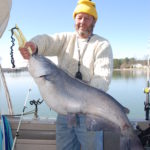
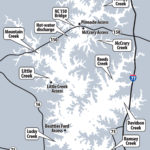
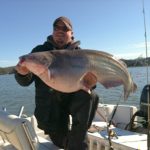
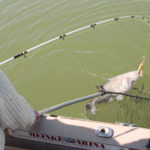
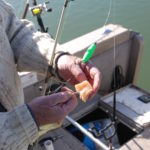

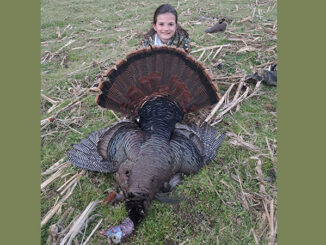


Be the first to comment